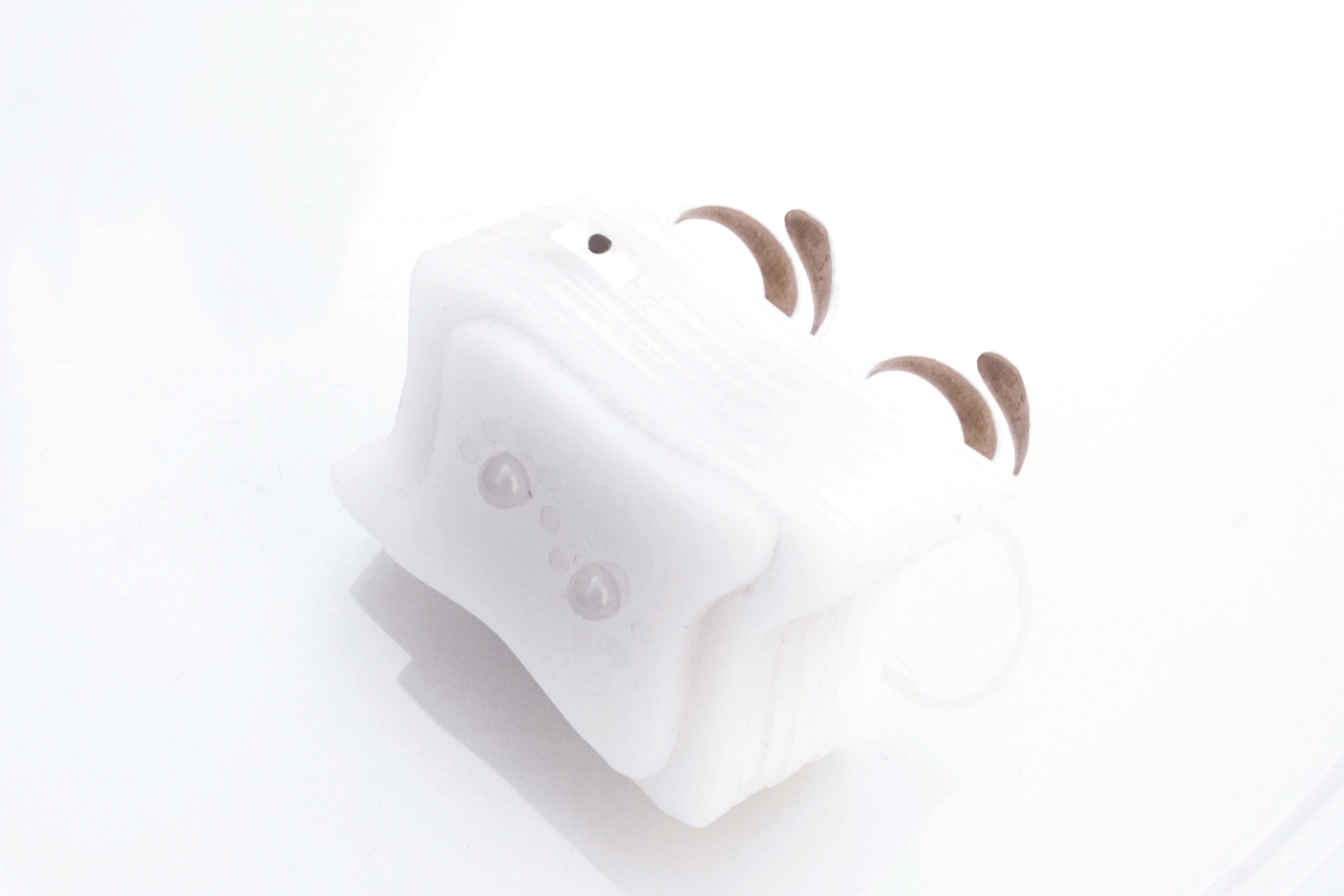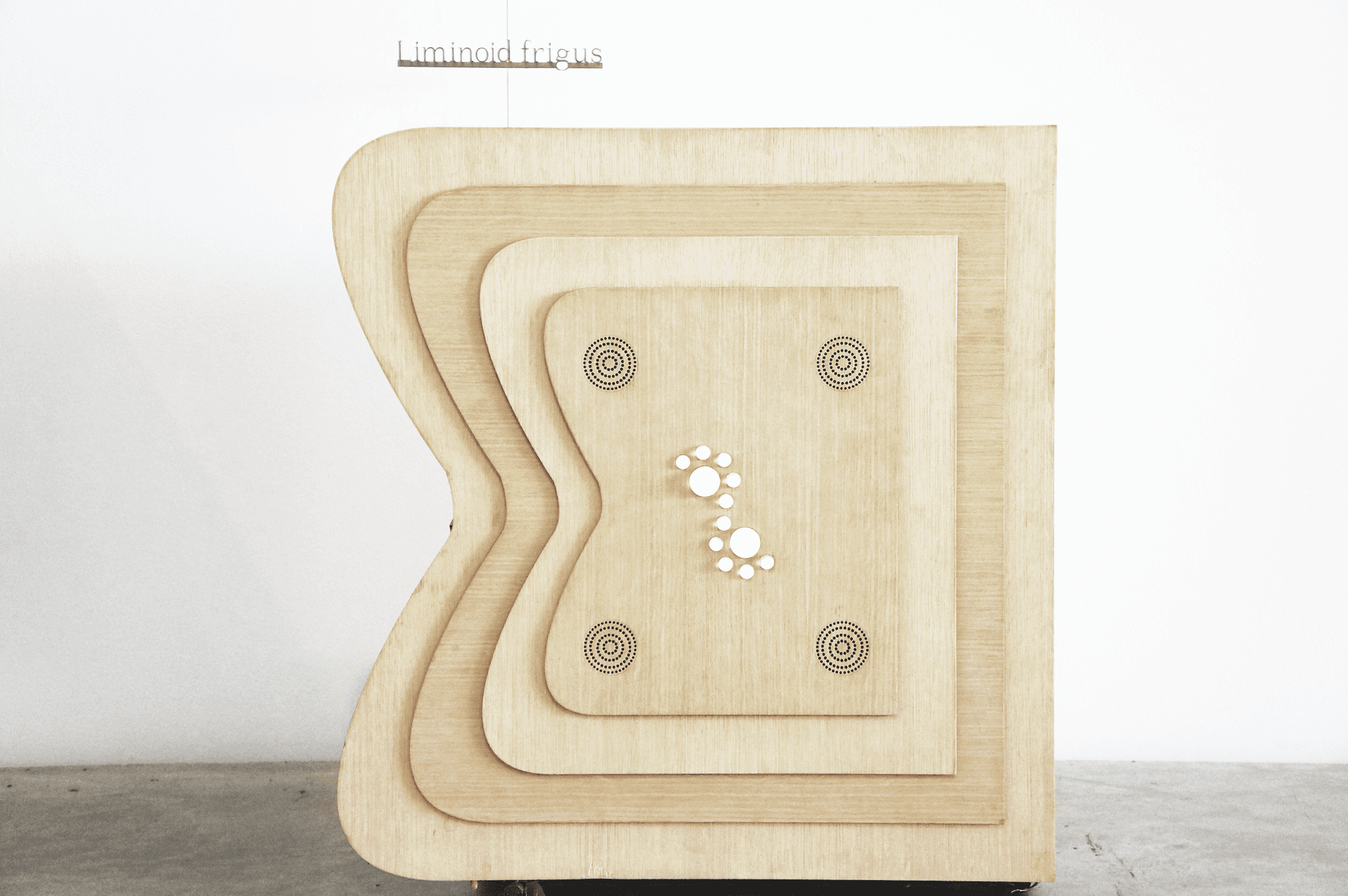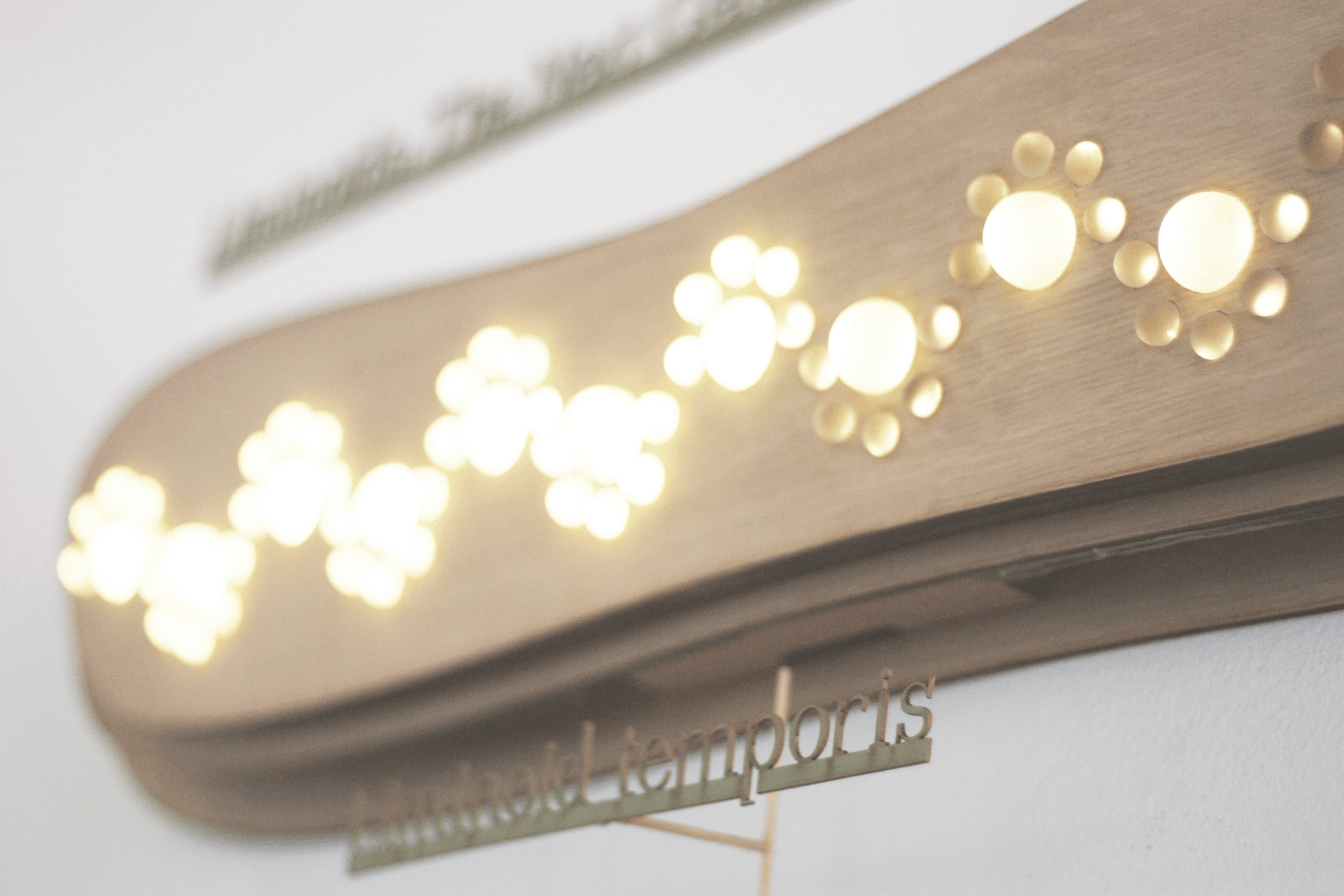In 2012, I graduated from Parsons,MFA in Design and Technology with my thesis on Liminoids, the new generation of Pavlovian Comfort Machines. This work was exhibited at Anna-Maria and Stephen Kellen Gallery in New York.

Have you ever opened the door to your fridge and aimlessly stared into it? Sometimes we compulsively interact with our computers, smart phones, fridges, and clocks without having a need for their utilitarian functions. Why do we do this? Is it because these machines have conditioned us to receive relief through our interactions with them? Do we subconsciously turn to them when we need comfort? What if these Pavlovian Comfort Machines have co-evolved with us based on our expectations from them and started to acknowledge these liminal moments when we seek comfort...
Liminoids are the next generation of Pavlovian Comfort Machines that monitor the user’s anxiety level and manage it during liminal moments. The current line consists of a wireless biosensor network comprised of a wearable accessory, Liminoid Orbis, a mini fridge, Liminoid Frigus and a wall clock, Liminoid Temporis.

Liminoid Orbis is a wireless biosensor that detects the user’s anxiety level and dictates when Liminoid Frigus and Liminoid Temporis would stop working as they normally would and start performing features that help comfort the user.

Liminoid Frigus is a mini fridge. When the user is anxious, Liminoid Frigus would temporarily cease performing its practical role, "being a normal fridge" and comfort the user through audiovisual tactile experiences.

Sometimes we compulsively check the time, perhaps to falsely assure our self that time is not moving faster or slower. Liminoid Orbis qualifies this as a liminal moment and signals Liminoid Temporis, the wall clock, to stop showing the actual time. Instead, the clock creates a visual guidance via its LEDs for the user to pace their breathing accordingly.
The DNA of Pavlovian Comfort Machines manifests in the technology we use in our daily lives: in the pull down gesture on our social media newsfeed, in our comfort TV Show...should we design interactions using the model of Liminoids, we might be able to take the human- machine co-evolution further, opening the Pandora’s box for new user needs which will lead to new interaction styles.
Next project
